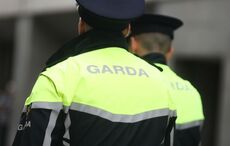NASA has been granted a patent on research by University of Ulster’s computer scientist Roy Sterritt.
Sterritt is helping change the face of space exploration with his automatic software engineering methods which are now being used by the US government agency.
Last week a ceremony was held by NASA, in Mitchelville, Maryland, to commend Sterritt’s work.
Along with NASA’s Mike Hinchey, Sterritt has devised programs that make small robotic craft self-directing and self-controlling. The craft can also self-destruct in case its behavior threatened the aims of the mission.
Scientist believe that in the future whole swarms of small craft will replace larger single craft missions.
Two patents on the men’s work have been granted so far.
Six years ago senior scientists at NASA heard Sterritt speak about his ideas, some of which seemed like science-fiction stories. However they have now made it a reality.
Using the principles of “autonomic computing”, which mirrors human physiology in technology, Roy has investigated ways of making these next generation of craft.
Speaking from his lab at Jordonstown he said the recent recognition from NASA “adds a whole new dimension" to his work. He told UTV he hopes that his work will "develop further and lead to other innovative work that will make space exploration more secure."
At the NASA ceremony Sterritt was given the NASA Patent Application Award and a Patent plaque at the prestigious annual NASA Goddard Space Flight Center's New Technology Report Program ceremony.




Comments